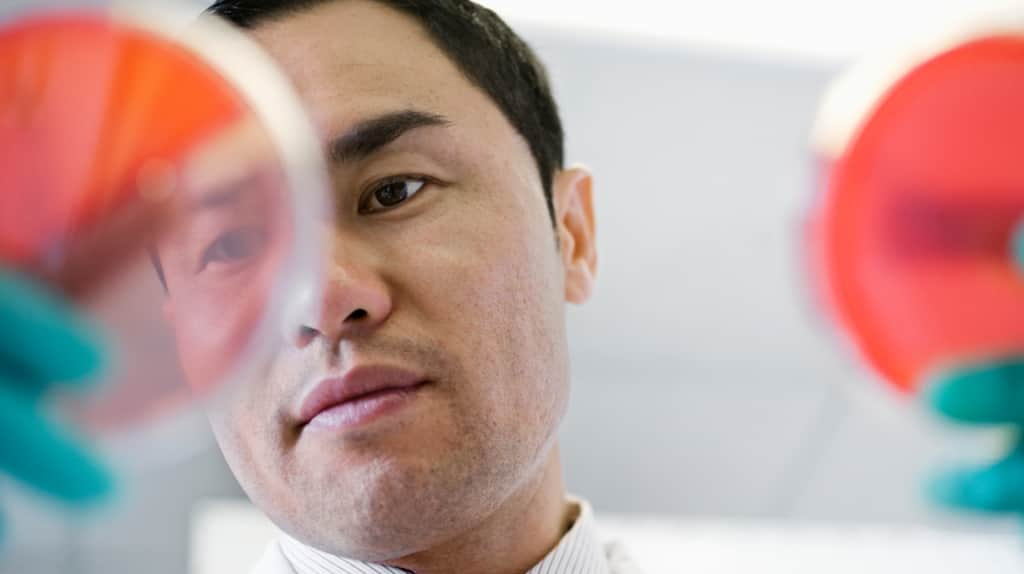- Raising non-dilutive capital is one way biotech startups can raise funds, but the challenge is knowing how to navigate the process with a successful outcome.
- Biomedical Advanced Research and Development Authority (BARDA) provides several different grant funding opportunities for startups working on solutions to address health security threats in the United States.
- Congressionally Directed Medical Research Program (CDMRP) provides biomedical R&D funding for Gulf War illness, respiratory prostate cancer, psychological health, traumatic brain injury and more.
This article is the first part of a three-part series on non-dilutive capital opportunities, such as BARDA and CDMRP, for life science and healthcare founders. Be sure to check parts 2 and 3 where I discuss NIH SEED as well as ARPA-H grants, respectively.
As a biotech startup, there are any number of ways you can raise non-dilutive funds for your company. The big challenges, however, are how to identify the many potential sources of biotech funding and the multiple steps needed to submit a successful application for funding.
I recently sat with Eric Hanson MD, MPH, the CEO and co-founder of International Scientific Advisors (ISA), for a conversation about how biotech companies can best navigate biotech funding sources. ISA is a company of military- and medical-connected personnel advising medtech and biopharma companies on how to accelerate the commercialization of their technology and platform initiatives to federal markets.
Specifically, we talked about two prominent government sources of non-dilutive capital for biotech startups: Biomedical Advanced Research and Development Authority (BARDA) and Congressionally Directed Medical Research Program (CDMRP). BARDA typically funds later stage, advanced technologies, or higher technology readiness level (TRL) products. CDMRP can provide startups with funding opportunities over a broad continuum of basic, applied, and advanced research including clinical trials support.
Each grant has its own unique application requirements, but both are worth exploring as a means of securing funding, particularly at critical points for startups during their R&D processes.
We also discussed the critical role of Cooperative Research and Development Agreements (CRADA) and how important it is for startups to understand the agreement’s components and the requirements for leveraging this agreement to pursue federal grants.
The funding potential of BARDA
We started the conversation with a discussion about BARDA, a component of the Administration for Strategic Preparedness and Response (ASPR) in the U.S. Department of Health and Human Services. BARDA provides several different grant funding opportunities for startups working on solutions to address health security threats in the United States. The BARDA Broad Agency Announcement (BAA) typically funds that meet portfolio requirements (e.g., TRL 5-6), but there have times such as the SARS-CoV-2 pandemic when earlier TRL products were considered out of necessity (e.g., TRL4+). The BARDA Easy Broad Agency Announcement (EZ-BAA) provides another mechanism that can fund earlier and later TRL products than is typically funded by BARDA BAA proposals.
More specifically, BARDA funds companies that develop medical countermeasures (MCM) that address public health and the medical consequences of pandemic influenza and emerging infectious diseases (like SARS-CoV-2 and COVID-19) as well as chemical, biological, radiologic and nuclear accidents, incidents and attacks. BARDA grants cover a broad range of capabilities from medtech to biopharma, drugs, vaccines and digital health diagnostics.
“There’s a large number of technologies in medtech and biopharma,” said Dr. Hanson, “and as we move into the networked future of telemedicine, remote support, and other technologies like AI, all of these things have to be brought together. That's what BARDA can potentially provide: large funding levels that are required for implementation.”
BARDA focuses on developing medical countermeasures that address public health and the medical consequences of pandemic influenza and emerging infectious diseases, like SARS-CoV-2 and COVID-19.
Initially, you’ll need to know how to navigate that first entry point into BARDA – the best tactical application for the near-term and the best strategic application for the long-term. “Companies that try to submit multiple applications at one time can dilute the quality of what they submit,” Dr. Hanson said.
One approach is to participate in a TechWatch meeting with BARDA and its interagency partners to discuss your product, technology or capabilities, and also explore potential partnering opportunities. “TechWatch is where BARDA brings together different entities like the National Institute of Allergy and Infectious Diseases (NIAID), Department of Defense (DOD) or Food and Drug Administration (FDA),” said Dr. Hanson. “You’ll have anywhere from 10 to 30 people on a phone call, and it’s a wonderful way to get the visibility and awareness of your technology out there to multiple entities at one time.”
Oftentimes, the best way to initiate the funding process with BARDA is to engage with one of its technical point of contacts or program managers first – before undertaking what can be an arduous and time-consuming application process. This is where advisory companies, like ISA and others, can help you navigate federal funding.
“We’ve worked with quite a few startup companies to facilitate a Marketing Call for EZ-BAA or TechWatch meeting for BAA with one of the program managers at BARDA. This is an efficient way to assess if BARDA is interested in funding a particular technology or platform,” says Dr. Hanson. “It can save the company a lot of resources that are required to put together a whole application, only to get turned down.”
BARDA sources of non-dilutive funding
To help expedite the funding process, BARDA makes non-dilutive capital available through its Division of Research, Innovation, and Ventures (DRIVe) program’s EZ-BAA. According to Dr. Hanson, this funding source is accessible to small businesses and cover up to $750,000 over six months. An EZ-BAA can be extended as a EZ-BAA+ project for $2M to $10M on average and up to $20M in follow-on funding through BARDA. A Marketing Call with a BARDA program manager is a recommended first step to gauge its interest and help improve the likeliness of the application being accepted and funded.
When seeking funding from BARDA, it’s also critical to monitor its BAA which sets forth its broad categories and areas of interest and solicits proposals focused on those specific areas. The application is more in depth than the EZ-BAA application but can be funded to the tens of millions.
Another funding source from BARDA, in collaboration with NIAID, is Project NextGen. This initiative coordinates with the government and private sectors to advance new, innovative vaccines and therapeutics to undertake laboratory R&D, clinical trials, and potential FDA authorization, with the goal of achieving commercial availability.
Another unique opportunity is that “JLABS and BARDA have partnered on a joint initiative to provide incubator space and funding to companies producing MCM technologies or platforms called Blue Knight,” said Dr. Hanson. “It’s a great example of public-private collaborations that work together on one opportunity to really help startups in the early growth stages to accelerate their MCM technologies.”
As mentioned earlier, securing BARDA funding may be dependent upon the TRL of your technology. Again, BARDA typically evaluates tech that is TRL 5 or higher, although it was moved lower for technologies funded in the COVID-19 response. Certain technologies may be expedited via animal rule approvals while others might require traditional safety clinical trials or expanded human clinical trials.
Some key questions to consider when considering a BARDA funding proposal are:
- Do you have the R&D resources on your team to participate fully in the R&D grants, cooperative agreements or contracts?
- Are you prepared to collect and compile information (e.g., a one-page summary or brief tech deck) to share with BARDA personnel during calls or meetings, such as the EZ-BAA Marketing Call or BARDA BAA TechWatch?
- Do you know any companies that have participated in the solicitation mechanism you are interested in? Read press releases and reach out to them to ask about the required processes.
- Do you know personnel within the federal entities you could contact to familiarize them with your technology?
Getting answers to these questions can be critical entry points in the process. “Your entry point is key,” Dr. Hanson said, “as is learning all you can about what’s expected to help you avoid wasting any your precious R&D resources.”
CDMRP funding opportunity
An additional non-dilutive funding source available to US and international biotech and medtech startups is a CDMRP grant which may provide anywhere from $1.2B to $1.6B in biomedical R&D funding per year. Much of what it funds is applicable to the DOD, such as Gulf War illness, respiratory prostate cancer, psychological health, traumatic brain injury and more.
Presently, CDMRP has 38 currently listed programs with each having multiple topics within them. For example, the peer-reviewed medical research program has nine portfolios and dozens of topics within each of those portfolios which may be funded for $370M in 2023.
While the vast majority of CDMRP funding goes to universities, Dr. Hanson encourages private companies to review their listed programs and topics regularly for a match. “Each year, the topics vary slightly depending on what is needed, but we've been very successful in helping startups capture funding.”
Just because CDMRP funding is heavily weighted towards universities, there may be CDMRP funding opportunities for startups. “If you're early on with your technology, and you have a strong university relationship, you might think about having them take the lead at that stage as well,” Dr. Hanson said.
Once your technology reaches a higher TRL things can switch, he went on to say. “About 80% of the funding at the later TRLs goes to private industry because of the commercialization requirement. So as a company, working with a university for the first level of funding may be a viable option. It’s at the level two or later stage that the company can take the lead. These are the kind of subtleties that can help drive more early-stage funding awards from CDMRP.”

Dr. Hanson cited an example of a startup that his company worked with that partnered with a university-led research team on a Small Business Technology Transfer (STTR) Phase I award. Working with a university later enabled the startup to secure $11M through other federal funding mechanisms, and eventually, $40M.
According to Dr. Hanson, the company was working on a civilian pipeline, but this opened up an entirely new MCM pipeline for them and significantly increased the value of the company. Even more important, this company became eligible to receive an MCM priority review voucher from the FDA which would give them about four months of acceleration towards evaluation. “That can be worth about $100M to $120M on average with transfer to another company,” said Dr. Hanson.
How CRADA supports capturing non-dilutive funding awards
Once a startup obtains one of these sources of funding, a CRADA is needed. The US Government requires a formal written agreement between one or more federal laboratories and one or more non-federal parties.
The document formalizes a long-term business relationship where you jointly agree to work together with a research laboratory or medical treatment facility. Essentially, it’s an industry, federal, and joint statement of work that usually comprises the research, development, testing and evaluation that will be completed.
The agreement documents the unique, specialized or experimental material that’s transferred between the two parties for commercial evaluation, testing or other uses, so a Material Transfer Agreement (MTA) is part of CRADA. For example, CRADA provides your startup with many unique benefits such as access to subject matter experts, governmental resources, labs and models of testing in medical or pre-clinical situations.
The agreement also covers data sharing, enabling both parties to share data back and forth, and serves as a background intellectual property disclosure. “This means that anything that's jointly developed is known, and the company has exclusive first rights to license this inexpensively,” Dr. Hanson said. “Licensing the jointly developed tech can open up numerous additional resources for the company.”
CRADA formalizes a long-term business relationship where federal and non-federal parties jointly agree to work together with a research laboratory or medical treatment facility.
When CRADA is implemented, Dr. Hanson encourages a startup to put out a press release, after clearance by the Public Affairs Office, to obtain visibility for your research as soon as possible. A federal entity cannot endorse a product, but “you can say that ‘we’re working together’ and that the DOD, for example, wants to evaluate your technology – or use it – is a powerful way to gain credibility which can lead to other sources of funding,” he said.
Techlink, a nonprofit DOD partnership intermediary, conducts evaluations of the return on investment associated with various CRADAs. It found that from 1996 to 2018, the joint R&D completed by 413 companies led to more than $23B in total economic output, $8.7B in sales of products and services, and $4.9B back to the US military. These CRADAs also created 118,929 jobs with an average salary of $75,292.
Conclusion
For medtech and biopharma startups, there are many non-dilutive capital opportunities available. This is particularly true for companies focused on advancing the research and development of certain drugs, vaccines, diagnostic tools and medical devices that combat public health emergencies such as pandemic influenza and emerging infectious diseases.
Funding paths can run across multiple federal entities. Whatever path you choose, receiving your first grant is a big milestone. Regardless of the entity from which you receive the funding, it may help you get more from other sources, which in turn can help you with CDMRP, BARDA, or other non-dilutive funding sources.
“Every funding application is different, but they all can be very synergistic to each other,” Dr. Hanson said. “If, for example, a DOD federal agency finds your technology a good fit from a dual-use or dual-purpose standpoint, then other entities might be open to funding non-redundant parts of it – and different innovations of the technologies as well.”
From my conversation with Dr. Hanson, it became clear that navigating the many potential sources of non-dilutive capital, and the multiple steps needed to submit a successful funding application, can be challenging. BARDA and CDMRP, using a CRADA to define the business relationship, are good places to start. A recommended first step is speaking with an advisory company that understands the biotech and medtech grant, cooperative awards and contracting processes.
Acknowledgement
Eric Hanson MD, MPH
CEO, International Scientific Advisors
International Scientific Advisors is a Techstars portfolio company that provides operational/clinical guidance to innovate medtech and biopharma products and efficiently navigate DoD/Federal Agency funding and commercialization processes.



